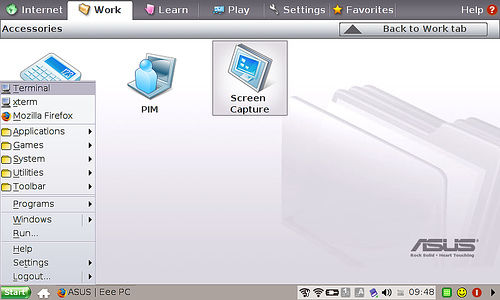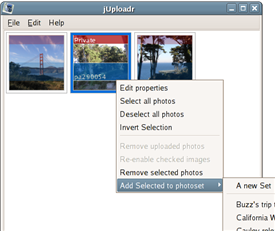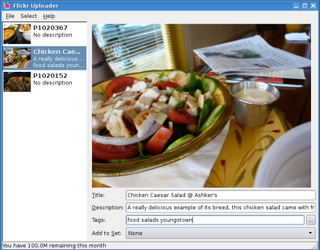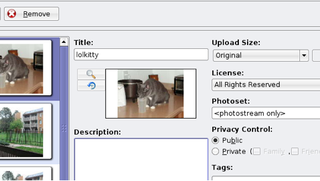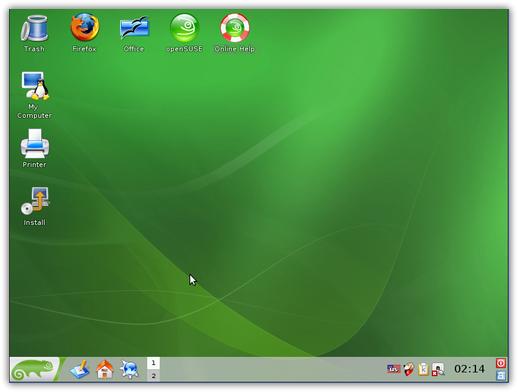Among Firefox 3 pending improvements it a cool tab preview feature that shows actual thumbnails of the currently opened tabs. The feature is currently available as an experimental extension developed by Dão Gottwald, but could make its way to Firefox 3 final code.
First, the List all tabs button in the tab bar is replaced with a button that opens a black window with thumbnails and the active tab highlighted in a slightly bigger size. Tabs can be located by inspection or you can enter a few letters from the tab title you want and thumbnails are quickly filtered out.
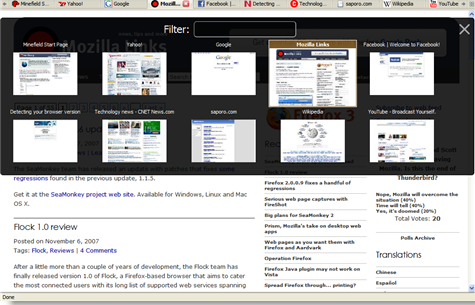
Switching tabs with the Ctrl + Tab (Cmd + Tab on Mac) brings a black bar across the whole screen with thumbnails of the closest tabs with the site’s favicon overlayed for easier identification.
As you can notice from the screenshot below, the selected tab is shown slightly to the left (instead of the obvious center) and may seem odd at first glance. However this position allows to see the most next tabs at a time.

To be honest, I didn’t see the benefit immediately. But after using it for a while I realize it’s really easier and quicker to reach the tab you are looking for when you can see how much apart it is. Filtering may be too much though.
Firefox 3 Beta 1 is expected within the next couple of weeks. Get Ctrl+Tab from Mozilla Bugzilla.
-mozillalinks

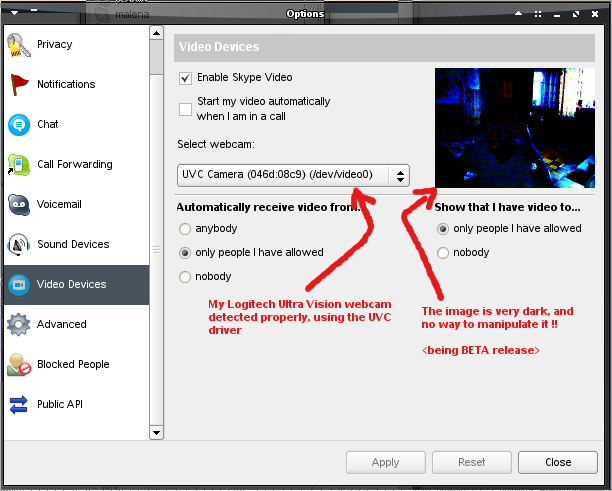
 Google and 33 other companies have announced an ambitious industry alliance that will maintain a completely open source mobile phone stack. The Open Handset Alliance (OHA) says phones based on its Linux-based “Android” stack will reach market in as soon as eight months.
Google and 33 other companies have announced an ambitious industry alliance that will maintain a completely open source mobile phone stack. The Open Handset Alliance (OHA) says phones based on its Linux-based “Android” stack will reach market in as soon as eight months.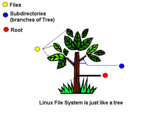 When it comes to file systems, Linux® is the Swiss Army knife of operating systems. Linux supports a large number of file systems, from journaling to clustering to cryptographic. Linux is a wonderful platform for using standard and more exotic file systems and also for developing file systems. This article explores the virtual file system (VFS)—sometimes called the virtual filesystem switch—in the Linux kernel and then reviews some of the major structures that tie file systems together.
When it comes to file systems, Linux® is the Swiss Army knife of operating systems. Linux supports a large number of file systems, from journaling to clustering to cryptographic. Linux is a wonderful platform for using standard and more exotic file systems and also for developing file systems. This article explores the virtual file system (VFS)—sometimes called the virtual filesystem switch—in the Linux kernel and then reviews some of the major structures that tie file systems together. 